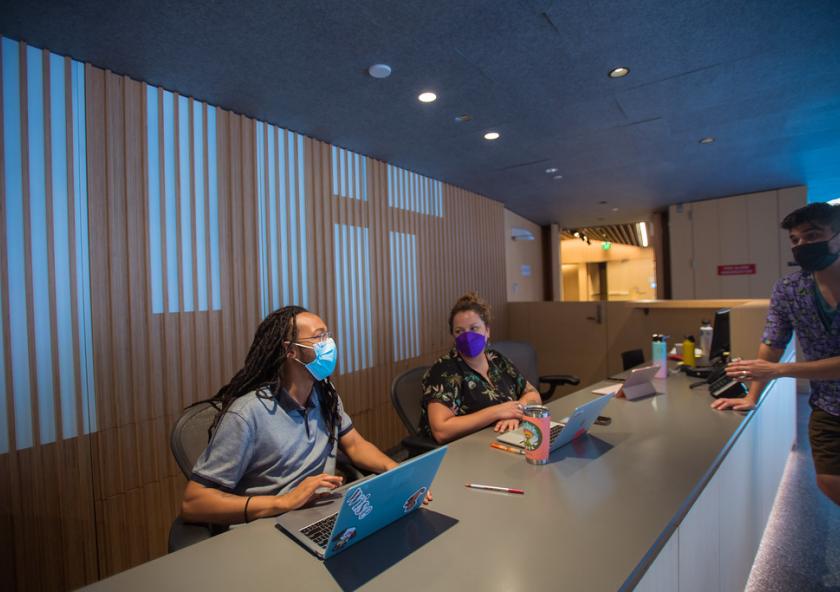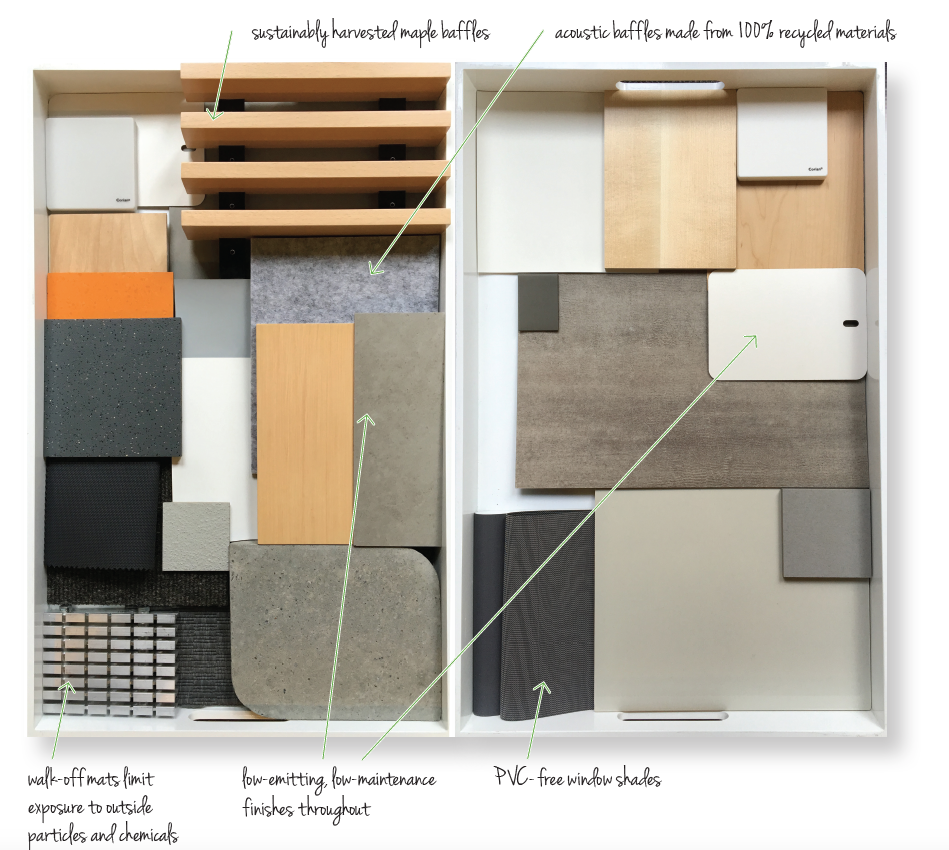
An inside look at sustainable furnishings with Stephen Newman

 Materials management is a key—though sometimes overlooked—tool in the fight against climate change and is a key ingredient for a sustainable campus. Materials are central to waste (and the associated greenhouse gases), reuse, and procurement. Purchased materials and waste disposal now play an even larger role in campus efforts as MIT works to account for Scope 3 emissions, as called for by Fast Forward: MIT’s Climate Action Plan for the Decade. But the focus on material lifecycles is not new at MIT, with teams long focused on the impacts of items many may not think much about the impact of their furniture, flooring, and campus furnishing choices.
Materials management is a key—though sometimes overlooked—tool in the fight against climate change and is a key ingredient for a sustainable campus. Materials are central to waste (and the associated greenhouse gases), reuse, and procurement. Purchased materials and waste disposal now play an even larger role in campus efforts as MIT works to account for Scope 3 emissions, as called for by Fast Forward: MIT’s Climate Action Plan for the Decade. But the focus on material lifecycles is not new at MIT, with teams long focused on the impacts of items many may not think much about the impact of their furniture, flooring, and campus furnishing choices.
One force behind MIT’s commitment to procuring sustainable materials at MIT is Stephen Newman, Interiors Program Manager for the Department of Facilities’ Committee for Renovations and Space Planning (CRSP). For Newman sustainability may come in the form of recyclable carpet, Red List free furniture, and upcycled desk chairs. Newman and his team are focused on outfitting interior spaces at MIT—providing guidance and project management for selecting furniture, flooring, and paint—with an increased focus on sustainability. “Whether you need an office chair or want to re-carpet an entire space, that’s us,” he says.
Newman’s work ranges from small one-off projects to entire buildings like the Schwarzman College of Computing and Building E37/38. Newman and his team work collaboratively with occupants to address both functional and sustainability needs. “When we’re engaged on a project, we ask a lot of questions as we seek out materials and furniture to meet occupant needs,” he says. “When then see where we can push even more sustainability: Can a piece potentially be carbon neutral? Can we look at the recycled content? Can it be Red List free?” In his 11 years at MIT, Newman says many sustainable features—which focus on occupant health, production, and sourcing—have gone from a nice-to-haves to must-haves and are now a required part of MIT’s Red Book, the Institute’s design standard for buildings.

(above right, Newman; above, interior materials used in E38)
“It’s exciting as the Interiors team expands and have taken great interest in building on our sustainable choices,” Newman says. “We’re now also looking at embodied carbon, recycled content, recyclability at end of life and how we can work with area partners to rehome, reuse, and repurpose furniture.”
A focus on reuse has been a big transition for Interiors—historically, both furniture and flooring removed during renovations was sent straight to landfills. Now reuse and recycling are centerstage and some MIT suppliers are making the process seamless. First offered in recent years by carpeting partner Mohawk Industry, recyclable carpet is now a standard for MIT—when the carpet is removed for a project, Mohawk picks it up to recycle it into new product. “The big drive for this is that Mohawk is reusing their own product, so they want to it back,” he says. “Having these larger companies on board has made it easier to make sustainable choices.” Another example of supplier support is the Steelcase chairs that can be found across campus which are 99 percent recyclable at end of life.
Newman and team also work with the Furniture Trust—a Cambridge non-profit that removes and repurposes old furniture—as well as reuse site Rheaply to divert items from the landfill and offer them to others either cost-free or at a deep discount. In addition to suppliers and partners making sustainable choices easier, Newman says that MIT community members are more often taking in interest in the products going into their space. “People will ask, ‘What’s in this product? Will it off-gas? What will be its impact long after I leave MIT?’” When possible, Newman works with building occupants and architects to select items or offer guidance to address these concerns.
One example of this approach is on display on the third floor of E38, home to the Office of Sustainability, where Interiors worked with staff, architects, and design teams to outfit a space that uses sustainable elements while testing them for use in additional campus spaces. The space—shared with the Environmental Solutions Initiative and the Abdul Latif Jameel Water and Food Systems Lab (J-WAFS)— features durable porcelain countertops produced through cleaner manufacturing process and sustainably harvested wood millwork, which are being used for the first time at MIT in an effort to inform future sustainable choices.
“We’re trying to really be at the forefront of sustainability in these projects, so we partner with designers, MITOS, and others across Facilities as much as we can,” Newman says. “We’re all working together to get that sustainable end note.”

